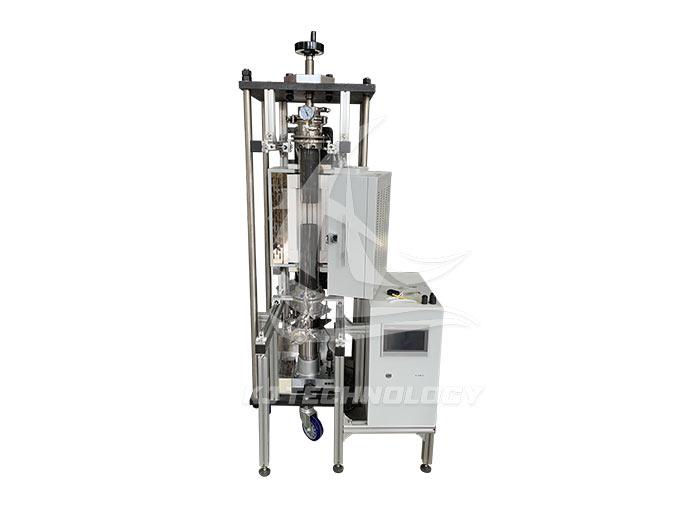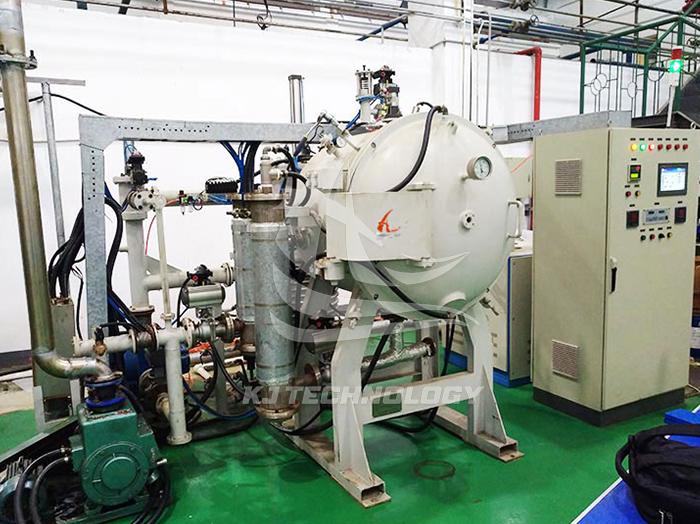Application of Gas Vacuum Furnace in Automotive Manufacturing Industry
 07-29-2025 Author: KJ technology
07-29-2025 Author: KJ technology
Gas vacuum furnaces are widely and crucially used in the automotive manufacturing industry, mainly reflected in the following aspects:
1. Heat treatment of key components
Vacuum quenching and tempering: Automotive engine cylinder liners, crankshafts, gears and other components need to undergo quenching treatment to enhance wear resistance and strength. Gas vacuum furnace avoids oxidation and decarburization through a vacuum environment, and is rapidly cooled with high-pressure gas (such as nitrogen) to achieve uniform quenching and reduce deformation rate. For example, after vacuum quenching, the surface hardness uniformity of the crankshaft is improved, the wear resistance is enhanced, and the service life is extended by more than 50%.
Vacuum annealing: After vacuum annealing, the surface smoothness of heat-resistant steel, stainless steel and other parts is improved, and their corrosion resistance and intergranular corrosion resistance are enhanced. For example, exhaust system components that have undergone vacuum annealing treatment can adapt to high-temperature corrosive environments and extend their service life.
Vacuum solution and aging: Lightweight materials such as aluminum alloys and magnesium alloys need to optimize their grain structure through solution treatment. Gas vacuum furnace completes solid solution and aging under vacuum or inert gas protection, improves material strength and toughness, and meets the needs of automotive lightweighting.
2. Precision component manufacturing and connection
Vacuum brazing: Components such as automotive heat exchangers and turbochargers need to be brazed in a vacuum environment to avoid the influence of oxide layers on bonding strength. For example, aluminum alloy heat exchangers use vacuum brazing technology, with a weld defect rate of less than 0.1% and a 30% increase in joint strength.
Vacuum coating: Components such as car signs, rearview mirrors, and wheel hubs need to be improved in corrosion resistance and aesthetics through vacuum coating technology. Chemical vapor deposition (CVD) is performed in a vacuum environment to ensure film purity and adhesion.
3. Special process support
Vacuum chemical heat treatment: Automotive gears and shaft parts need to improve surface hardness through processes such as carburizing and nitriding. Gas vacuum furnace achieves shallow carburizing in vacuum or controllable atmosphere, with precise control of carbon concentration gradient, surface hardness up to 58-62HRC, and optimized core toughness.
Vacuum degassing and degreasing: When metal materials are heated in a vacuum environment, gases such as hydrogen and oxygen, as well as oils and fats, evaporate and decompose, and are pumped away by a vacuum pump to improve material purity and fatigue strength. For example, after vacuum degassing treatment, high-strength bolts have increased tensile strength and low-temperature impact toughness by 1.6-3.5 times.
4. Quality Control and Cost Optimization
Reduce surface defects: Vacuum environment avoids oxidation and decarburization, reduces surface defects during heat treatment, reduces subsequent grinding allowance, and reduces production costs by 20% -30%.
Process stability: The gas vacuum furnace is equipped with an intelligent temperature control system and computer-controlled atmosphere inside the furnace, with a process repeatability error of ≤± 1%, ensuring consistent product quality.
Energy saving and environmental protection: Compared with controllable atmosphere furnaces, gas vacuum furnaces save electricity and energy, have small heat storage losses, no harmful gas emissions, and meet the requirements of green manufacturing in the automotive industry.








